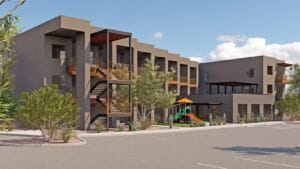The nation’s longest home price boom has ended after a run-up lasting 10½ years. Since prices peaked in June, we have had Month-on-Month declines of 0.5%, 0.4%, & 0.2% in September, August, & July respectively, according to data from the American Enterprise Institute’s Housing Center.
READ ALSO: Arizona No. 2 for largest house price appreciation
READ ALSO: Why experts say Arizona housing crisis is a ‘growing cancer’
Out of the 60 largest metros, 51 have had a decline from their respective peak home price levels, and only 2 are still growing. San Jose, San Francisco, and Seattle had the biggest declines from their peaks at -10.7%, -8.5%, and -8.2% respectively (see #1 in graphic).

September’s Year-on-Year HPA was 10.3%, down from 11.6% a month ago, a YoY peak of 17.2% in March 2022 and 15.8% a year ago. Based on Optimal Blue rate lock data, YoY HPA is projected to decline to further 9.2% in October 2022 and 7.4% in November and YoY HPA is expected to slow to 4%-6% for December 2022.
YoY HPA varied significantly among the 60 largest metros that had been experiencing a home price boom. It ranged from 2.6% and 3.4% in San Francisco and San Jose to 21.2% and 20.6% in Cape Coral and North Port (see #2 in graphic).
Historically, HPA in the low price tier outpaced HPA in the upper price tiers. This trend continues to hold true. Although home prices were down across all four price tiers, the high end and low end of the market were hit differently. In September, high price tier was down 3.7% from its peak in May 2022, while low price tier was down 0.5% from its peak in July.
September months’ supply and active listings both increased above seasonal trends, but remain at historically low levels. Months’ supply stood at 1.9 months in September 2022, down from 2.8 months in September 2019, but up from 1.7 months in August 2022, and 0.7 months in April 2022 (see #3 in graphic).




